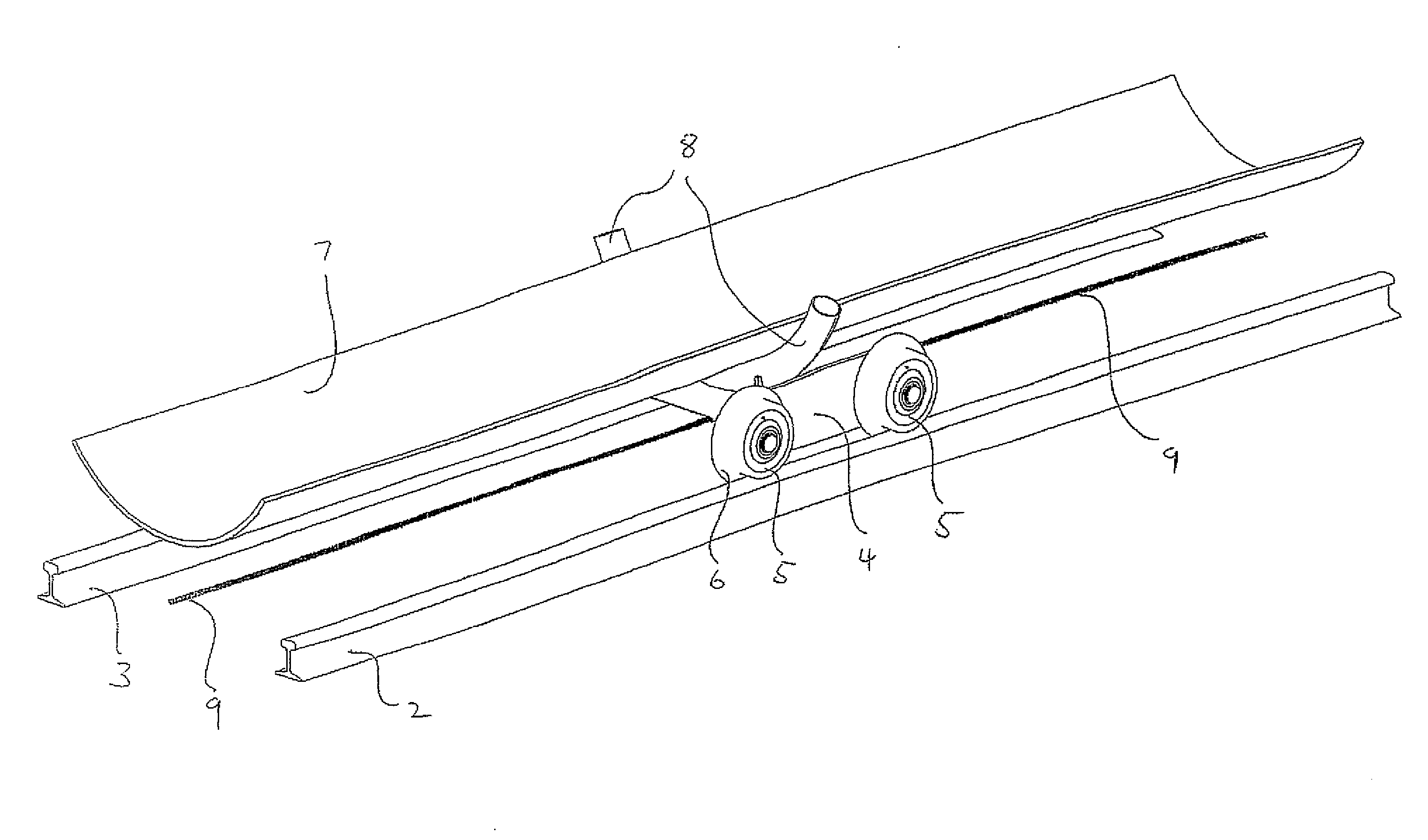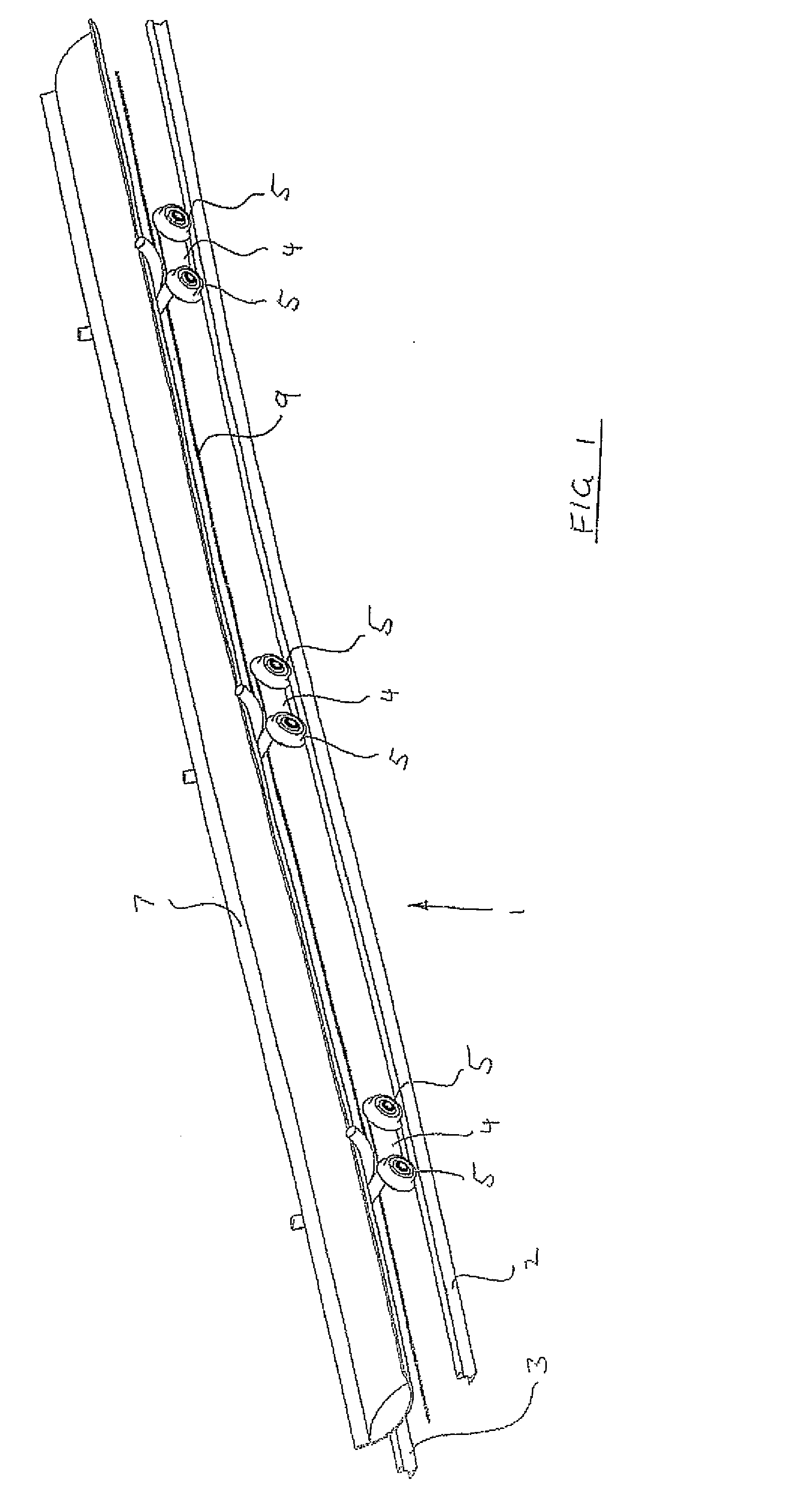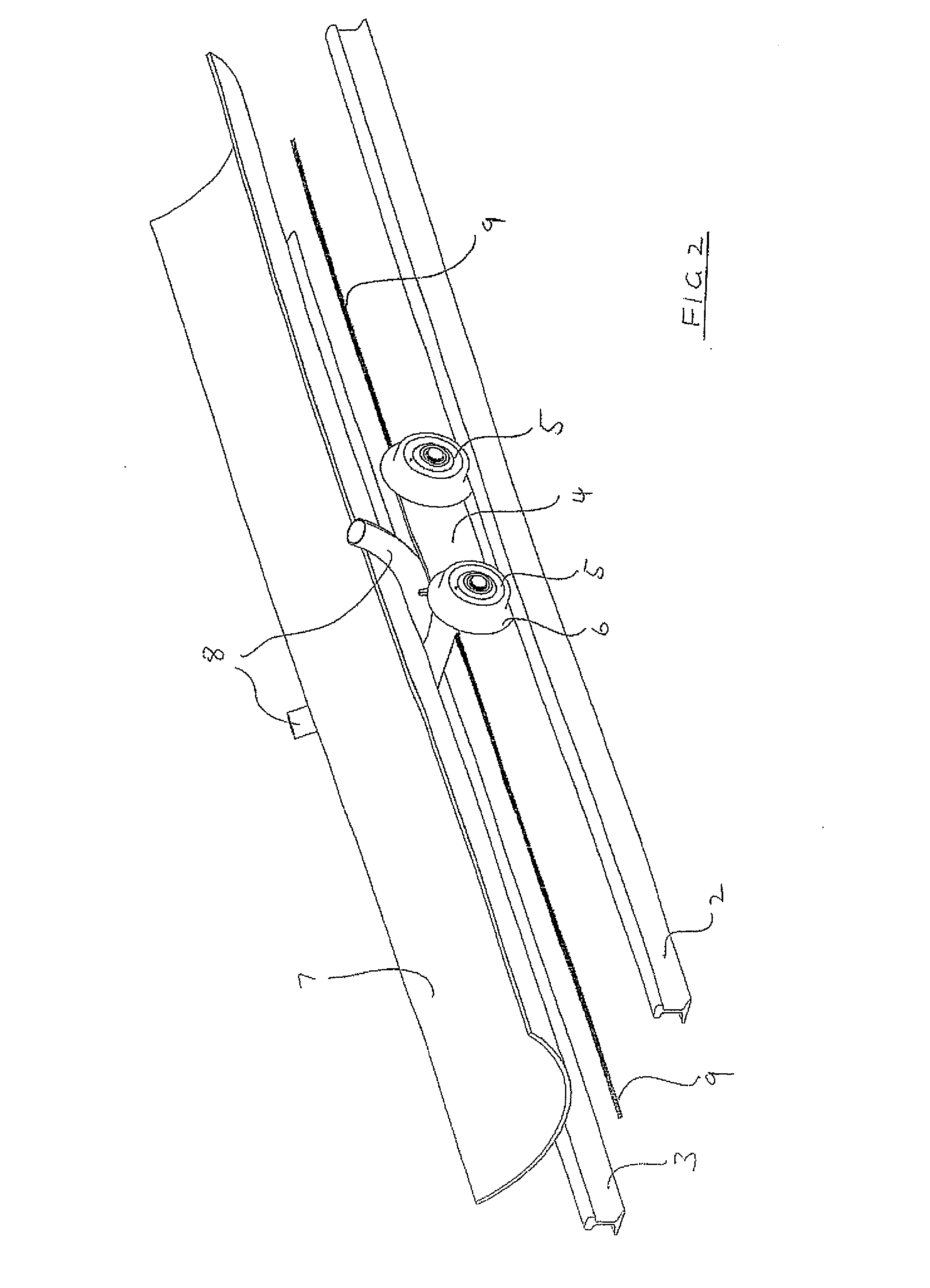Rail conveyor system
a conveyor system and rail technology, applied in the direction of conveyors, rope railways, ways, etc., can solve the problems of limiting the operational length of conventional belt conveyors, limiting the efficiency and economy and reducing the efficiency of overland bulk material transportation systems
- Summary
- Abstract
- Description
- Claims
- Application Information
AI Technical Summary
Benefits of technology
Problems solved by technology
Method used
Image
Examples
Embodiment Construction
[0045]In one preferred form of the invention, the rail conveyor system is formed by providing a rail track 1 which typically incorporates two side-by-side conventional rails 2 and 3. These rails may be of a similar type to that used in conventional train rail tracks and may either be mounted on the ground on sleepers as for a conventional rail track system or elevated and supported on frames as is well-known for typical belt conveyor systems.
[0046]The system further comprises a plurality of carriages 4 spaced apart from one another and running on wheels 5 supported by the tracks 2 and 3.
[0047]As can be more clearly seen in FIG. 2, the wheels are typically flanged as can be seen at 6 and engage the inside edges of the rails 2 and 3 in a similar manner to a conventional train system.
[0048]The rail conveyor system according to the invention further incorporates a continuous carry belt 7 which is supported by the carriages 4, typically by being carried in a suitably shaped yolk 8 mounte...
PUM
 Login to View More
Login to View More Abstract
Description
Claims
Application Information
 Login to View More
Login to View More - R&D
- Intellectual Property
- Life Sciences
- Materials
- Tech Scout
- Unparalleled Data Quality
- Higher Quality Content
- 60% Fewer Hallucinations
Browse by: Latest US Patents, China's latest patents, Technical Efficacy Thesaurus, Application Domain, Technology Topic, Popular Technical Reports.
© 2025 PatSnap. All rights reserved.Legal|Privacy policy|Modern Slavery Act Transparency Statement|Sitemap|About US| Contact US: help@patsnap.com



